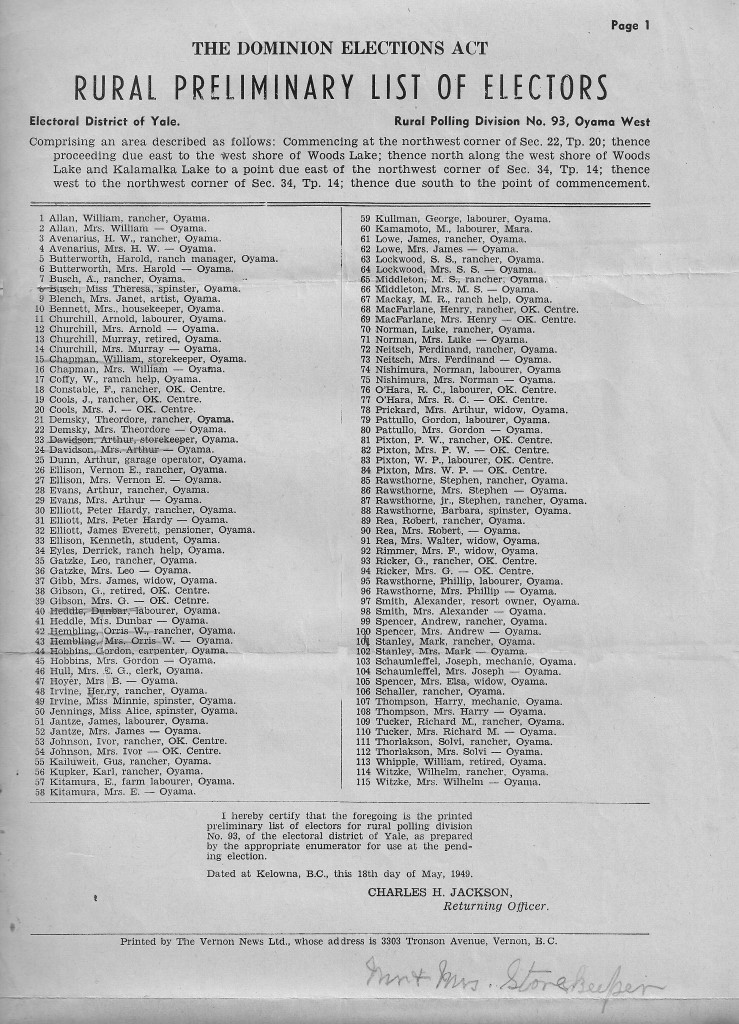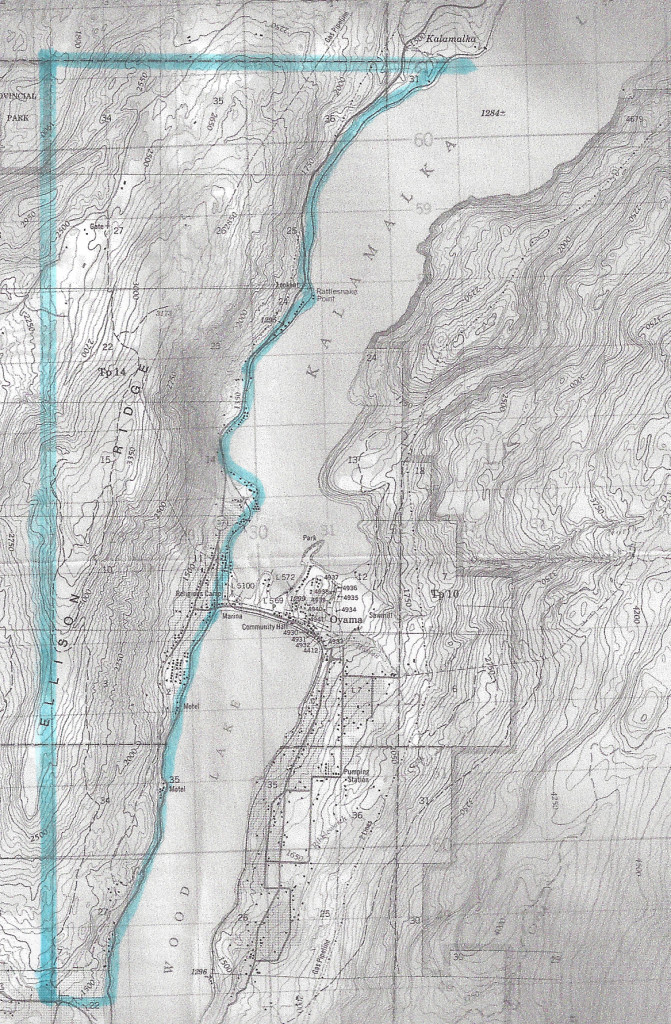Occasionally local residents bring scrapbooks containing non-family items of local interest to the Lake Country Museum and Archives and such was the case when Dick Heddle delivered his mother’s collection. Among the papers was a page entitled “Rural Preliminary List of Electors” for Rural Polling Division No. 93, Oyama West. In handwriting at the bottom of the page is an inscription “Mr. and Mrs. Storekeeper,” which indicates that this notice was likely posted in the Ranch Supply Company, Oyama’s main store in 1949. That is likely where Alice Heddle obtained it.
The accompanying map shows the boundaries of this polling division, which began at the junction of Okanagan Centre Road West and Oceola Road. From there the boundary went due east to Wood Lake, then the boundary followed the shoreline of Wood and Kalamalka lakes as far north as Kekuli Bay campsite, then west to the Ellison Provincial Park boundary and then south in a straight line to the starting point. This polling station includes some residents of Okanagan Centre as well as those on the west side of Oyama.
The Okanagan Centre electors in 1949 include the Constables, Cools, Gibsons, O’Haras, Johnsons, MacFarlanes, Rickers, and Pixtons. Interestingly, none of those people appear to have lived within the boundaries of this polling division. Most of them lived along Carr’s Landing Road. One would hope that this list of electors was changed before the election.
A second item of interest is the presence of the Kitamuras and Nishimuras, two Japanese families who were likely relocated to Oyama during the war and who remained there until at least 1949. Given the inaccuracies of the document regarding Okanagan Centre electors, one cannot give this information much credence. The rest of the electors, those from Oyama West, appear to be correct.









Douglas Broome
In olden days lists of electors were left on very public places like utility polls giving the names, addresses, and occupations of local electors so that any voter fraud might be detected. In some jurisdictions graveyards had had the habit of voting.
The public listings of electors were put up by individual polls rather than ridings.